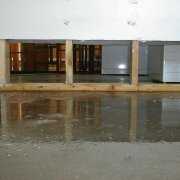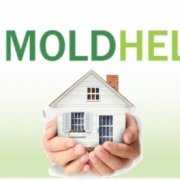Paecilomyces
A contaminant/opportunistic fungus found world wide in soil and decaying vegetation, associated with pulmonary and sinus infections in those who had organ transplants, as well as inflammation of the cornea. Some reports of allergies, humidifier associated illnesses, and pneumonia.
Paecilomyces is a contaminant/opportunistic pathogen, found world wide in soil and decaying vegetation. Paecilomyces is a cosmopolitan filamentous fungus which inhabits the soil, decaying plants, and food products. Some species of Paecilomyces are isolated from insects. The telemorphs of Paecilomyces are classified in the genera Byssochlamys, Chromocleista, Talaromyces, and Thermoascus. Paecilomyces is usually considered as a contaminant but may also cause infections in humans and animals.
The genus Paecilomyces contains several species. The most common are Paecilomyces lilacinus and Paecilomyces variotii. The color of the colony and certain microscopic features help in differentiation of the Paecilomyces species from each other. Another feature that helps in species identification is thermophilicity. Paecilomyces crustaceus and Paecilomyces variotii are thermophilic and can grow well at temperatures as high as 50 degree and possibly 60 degree C.
The phialides are characteristically swollen at the base and gradually narrowed into a long beak. The spores (conidia) are produced in chains from the tips of the phialides, are colourless or brightly pigmented, and are usually rather narrow. Similar to Penicillium, but the chains of spores tend to be widely divergent in Paecilomyces and more parallel in Penicillium. Holomorphs: Byssochlamys, Talaromyces, Thermoascus. Ref: Bissett 1979; Samson 1974. Colonies of Paecilomyces grow rapidly and mature within 3 days. Paecilomyces crustaceus and Paecilomyces variotii are thermophilic and can grow well at temperatures as high as 50 degrees and possibly 60 degrees C. The colonies are flat, powdery or velvety in texture. The color is initially white, and becomes yellow, yellow-green, yellow-brown, olive-brown, pink, or violet, depending on the species. The reverse is dirty white, buff or brown. A sweet aromatic odor may be associated with older cultures.
A common attribute of these fungi is the lack of sexual forms, thereby the name Fungi Imperfecti. The infection cycle of entomopathogenic fungi, including enzyme production on the cuticle, remains one of the most fascinating areas of research involving these organisms. In this cycle, a spore is deposited on the insect cuticle followed by the development of a germ tube (and in some cases by a structure called appresorium) which penetrates the insect. Fungal penetration can also occur through the spiracles, the mouth, and anal opening. Development occurs in the hemolymph with mycelia eventually exiting from the insect, and producing conidia. Insect mortality due to fungal infection has been ascribed to the destruction of insect tissues, the release of toxins, and nutritional deficiencies.
Toxin Production and Clinical Significance
Paecilomyces species can cause various infections in humans. These infections are occasionally referred to as paecilomycosis. Corneal ulcer, keratitis, and endophthalmitis due to Paecilomyces may develop following extended wear contact lens use or ocular surgery. Paecilomyces is among the emerging causative agents of opportunistic mycoses in immunocompromised hosts. Direct cutaneous inoculation may lead to these infections. These infections may involve almost any organ or system of human body. Soft tissue, pulmonary, and cutaneous infections, cellulitis onychomycosis, sinusitis, otitis media, endocarditis, osteomyelitis, peritonitis and catheter-related fungemia have all been reported. Paecilomyces species can also cause allergic disorders, such as allergic alveolitis.
Further Reading
- Abdel-Gawad, K.M., & Zohri, A.A., Fungal flora and mycotoxins of six kinds of nut seeds for human consumption in Saudi Arabia, Mycopathologia 124 (1993) 55-64.
- Aisner, J., Schimpff, S.C., Bennett, J.E., Young, V.M., Wiernik, P.H., Aspergillus infections in cancer patiens. Association with fireproofing materials in a new hospital. J.Am. Med. Assoc. 235 (1976) 411-412.
- Ajello, L., Hyalohyphomycosis and phaeohyphomycosis: two global disease entities of public health importance. Eur. J. Epidemiol. 1(1986) 243-251.
- Al-Suwaine, A.S., Bahkali, A.H., Hasnain, S.M., Seasonal incidence of airborne fungal allergens in Riyadh, Saudi Arabia. Mycopathologia 145(1999)15-22.
- Alberts, B., Bray, D., Lewis, J., Raff, M., Roberts, K.,Watson, J.D., in “Molecular Biology of the Cell”, published by Garland Publishing, Inc, 1983.
- Ali, M.I., Salama, A.M., Ali, M.T., Possible role of solar radiation on viability of some air fungi in Egypt. Zentralbl. Bakteriol. Parasitendkd. Infektionskr. Hyg. 131 (1976) 757-759.
- Alexopoulos, C.J., Mims, C.W., Blackwell, M., Introductory mycology 4th ed. John Wiley, New York, 1996, 868.
- American Conference of Governmental Industrial Hygtienists, (ACGIH) Cincinattati, Ohio 1989, Guidelines for the assessment of bioaerosols in the indoor environment.
- Anaissie, E., Kantarjian, H., Jones, P., Barlogie, B., Luna, M., Lopez-Berestein, G., Bodey, G., Fusarium. A newly recognized fungal pathogen in inmunosuppresed patiens. Cancer 57 (1986) 2141-2145.
- Andersen, A.A., 1958. New sampler for the collection, sozing, and enumeration of viable airborne particles. J. Bacteriol. 76 (1958) 471-484.
- Arnow, P.M., Andersen, R.L., Mainous, P.D., Smith, E.J., Pulmonary aspergillosisi during hospital renovation. Am Rev. Resp. Dis. 118 (1978) 49-53.
- Arnow P.M,, Sadigh, M., Costas, C., Weil, D., Chudy, R., Endemic and epidemic aspergillosis associated with in-hospital replication of Aspergillus organisms. J Infect Dis 164 (1991) 998-1002.
- Arx, J.A., Guarro, J., and Figueras, M.J., The ascomycete genus Chaetomium. Nova Hedwigia Beiheft 14 (1986) 1-162.
- Arx, J.A.von, Rodriguez de Miranda, L., Smith, M.T., and Yarrow, D., The genera of Yeasts and Yeast like fungui. C.B.S., Stud. Mycol. 14 (1977).
- Bandoni, R.J., Aquatic hyphomycetes from terrestrial litter. In: Wicklow, D.T., Carrol, G.C., eds. The fungal comunity. Its organization and role in the ecosystem. New York: Marcel Dekker Inc., 1981. 693 – 708.
- Bissett, J., 1984, 1991, A revision of the genus Trichoderma I,II,III Can. J. Bot. 62 (1991) 924-931; Can.J.Bot. 69 (1991) 2357-2372; Can. J. Bot. 69 (1991) 2373-2417.
- Bocquet, P., Brucker, G., Integrated struggle against aspergillosis at the level of a single hospital or a hospital cluster. Pathol Biol (Paris) 42(1994)730-736.
- Burnett, H.L., and Hunter, B.B., Illustrated Genera of imperfect Fungi. MacMillan Publ. Co., Amsterdam. 1987.
- Bodey, G.P., Vartivarian, S., Aspergillosis, Eur. J. Clin. Microbiol. Infect. Dis., 8 (1989) 413-437.
- Burge, H.A., Boise, R.J., Rutherfor, J.A., and W.R. Solomon. Comparative recoveries of airborne fungus spores by viable and non viable modes of vollumetric collection. Mycopathologia 61(1977)27-33.
- Burge, H.A., and W.R. Solomon. Sampling and analysis of biological aerosols. Atmos. Environm. 21(1987)451-456.
- Burgess, L.W., Liddell, C.M., Summerell, B.A., Laboratory manual for Fusarium research, 2nd ed. University of Sydney, Sydney. 1988.
- Burton, J.R., Zachery, J.B., Bessin, R., et al Aspergillosis in four renal transplant recipients. Ann. Intern. Med. 77 (1972) 383-388.
- Buttner, M.P., Stetzenbach, L.D., Monitoring airborne fungal spores in an experimental indoor environment to evaluate sampling methods and the effects of human activity on air sampling. Appl. Environ. Microbiol. 59 (1993) 219-226.
- Calvo, M.A., Guarro, J., Suarez, G., Ramirez, C. Airborne fungi in Barcelona city (Spain). Mycopathology 71 (1980) 41-43.
- Calder?n-Garcidue?as, L., Delgado, R., Calder?n-Gardue?as, A., Meneses, A., Ruiz, L.M., De La Garza, J., Acuna, H., Villareal-Calder?n A., Raab-Traub, N., Devlin, R., Malignan neoplasms of the nasal cavity and paranasal sinuses: a series of 256 patients in Mexico City and Monterrey. Is air pollution the missing link? Otrolaryngol. Head Neck Surg. 122 (2000) 499-508.
- Carmichael, J.W., Chrysosporium and some other aleuriosporic hyphomycetes. Can. J. Bot. 40 (1962) 1137-1173.
- Carmichael, J.W., Kendrick, W.B., Connors, I.L., and Sigler, L., Genera of Hyphomycetes. University Alberta Press, Edmonton, 1980, 386 pp.
- Cifuentes Blanco, J., M. Villegas R?os, J.L. Villareal-Ord?z and S. Sierra Galv?n. Diversity of macromycetes in pine-evergreen oak forest in Neovolcanic Axis, Mexico. En Mycology in Sustainable Development: Expanding Concepts, Vanishing Borders, eds. M.E.Palm and I.H. Chapela, Parkway Publ., Boone, N.C.
- Cole, G.T., and Kendrick, B., Taxonomic studies of Phialophora. Mycologia 65(1973)661-688.
- Cooley, J.D., Wong, W.C., Jumper, C.A., Straus, D.C., Correlation between the prevalence of certain fungi and sick building sindrom. Occup. Environ. Med. 55 (1998) 579-584.
- Cornet, M., Levy, V., Fleury, L., Lortholary, J., Barquins, S., Coureul, M.H., Deliere, E., Zittoun, R., Brucker, G., Bouvet, A., Efficacy of prevention by high-efficiency particulate air filtration or laminar airflow against Aspergillus airborne contamination during hospital renovation. Infect Control Hosp Epidemiol 20 (1999) 508-513.
- Cox & Wathes, Bioaerosols handbook, 1994.
- Dharmage, S., Bailey, M., Raven, J., Mitakakis, T., Thien, F., Forbes, A.,Guest, D., Abramson, M., Walters, E.H., Prevalence and residential determinants of fungi within homes in Melbourne, Australia, Clin Exp Allergy 29(1999)1481-1489.
- Davis, R., Summerbell, R., Haldane, D., Dufur, A., Yu, K., Broder, I., Dales, R., Kirkbride, J., Kauri, T., Robertson, W., Damant, L.; Federal – Provincial Working group on mycological Air quality in public buildings; Fungal contamination in public buildings: A guide to recognition and Management. Health Canada, 1995.
- De Hoog G.S., Hermanides-Nijhof, E.J., The black yeast and aallied hyphomycetes. Stud. Mycol. 15 (1977) 1-222. Citado por clasificaci?n de levaduras.
- Domsch K.H., Gams, W., Anderson, T.H. Compendium of soil fungi. New York: Academic Press, 1980. Citado por screening de especies
- Domsch, K.H., W. Gams, and T.H. Anderson. 1980. Compendium of soil fungi. Volume 1. Academic Press, London, UK.
- Emmanuel, S.C.,Impact to lung health of haze from forest fires: the Singapore experience. Respirology 5 (2000) 175-182.
- Ezeonu, I.M., Price, D.L., Simmons, R.B., Crow, S.A., Ahearn, D.G., Fungal production of volatiles during growth on fiberglass. Appl. Environ. Microbiol. 60 (1994) 4172-4173.
- Fiorina, A., Legnani, D., Fasano, V., Cogo, A., Basnyat, B., Passalacqua, G., Scordamaglia, A., Pollen mite and mould samplings by a personal collector at high altitude in Nepal. J. Investig. Allergol. Clin. Immunol. 8 (1998) 85-88.
- Flynn PM, Williams BG, Hetherington SV, Williams BF, Giannini MA, Pearson TA, Aspergillus terreus during hospital renovation. Infect Control Hosp Epidemiol 1993 Jul;14(7):363-5.
- Freire, F.C., Kozakiewicz, Z., Paterson, R.R., Mycoflora and mycotoxins of Brazilian cashew kernels. Mycopathologia 145 (1999) 95-103.
- Fresenius, G., 1850-1863 Beitr?ge zur Mykologie 111pp, 13 plates. H.L., Br?nner, Frankfurt.
- Furuhashi M, Efficiency of bacterial filtration in various commercial air filters for hospital air conditioning. Bull Tokyo Med Dent Univ. 25 (1978) 147-155.
- Gage, A.A., Dean, D.C., Schimert, G., Minsley, N., Aspergillus infection after cardiac surgery. Arch. Surg. 101 (1970) 384-387.
- Garrett, M.H., Rayment, P.R., Hooper, M.A., Abramson, M.J., Hooper, B.M., Indoor borne fungal spores, house dampness and associations with environmental factors and respiratory health in children. Clin. Exp. Allergy 28 (1998) 459-467.
- Gonzalez Glez. Minero, F.J., Candau, P., Gonzalez Glez Romano, M.L., Romero, F., A study of the aeromycoflora of Cadiz: relationship to anthropogenic activity. J. Investig. Allergol. Clin. Immunol. 2 (1992) 211-215.
- Gordon, G., Axelrod, J.L., Case report: prosthetic valve endocarditis caused by Pseudallescheria boydii and Clostridium limosum. Mycopathologia 89 (1985) 12-134.
- Gravesen S., Nielsen, P.A., Iversen, R., Nielsen, K.F., Microfungal contamination of Dump Buildings. Examples of risk constructions and risk materials. Environ. Health Perspect 107 (1999) 505-508.
- Green, V.W., D.Vesley, R.G., Bond, R.G., and Michaelsen. Microbiological contamination of hospital air. Appl. Microbiol. 10 (1962) 561-566.
- Grosse G, L’Age M, Staib F., Peracute disseminated course of fatal Aspergillus fumigatus infection in liver failure and corticoid therapy. A case report on the epidemiology, pathogenesis and diagnosis of the systemic course of Aspergillus infections. Klin Wochenschr 63 (1985) 523-528.
- Guyton, A.C. and Hall, J.E., in pp 481, 531, 532 of “Textbook of Medical Physiology” ed McGraw-Hill-Interamericana de Espa?a, 1996.
- Hancock, T.,Creating health and health promoting hospitals: a worthy challenge for the twenty-first century. Int J Health Care Qual Assur Inc Leadersh Health Serv. 12 (1999) VIII-XIX.
- Hawksworth, D.L. and Kirsop, B.E., Ed. Living resources for biotechnology, Filamentous fungi, Cambridge University Press, 1988.
- Hawksworth, D.L., The fungal dimension of biodiversity: magnitude, significance, and conservation. Mycol. Res. 95(1991) 641-655.
- Hesler, L.R., and A.H. Smith, North American species of Lactarius. Univ. Michigan Press, Ann Arbor. xii+841pp.
- Hoog, G.S. de, and Guarro, J., Atlas of Clinical fungi, C.B.S., Baarn, The Netherlands. 1995.
- Hiipakka DW, Buffington JR1. Resolution of sick building syndrome in a high-security facility. Appl Occup Environ Hyg 2000 Aug;15(8):635-43.
- Hirst, Ann. appl. Biol. 39(1952)257.
- Hudson, H.J., Aspergilli in the air spore at Cambridge, Trans. Br. Mycol. Soc. 52 (1969)153-159.
- Isselbacher, K.J., Braunwald, E., Wilson, J.D., Martin, J.B., Fauci, A.S., Kasper, D.L., en Harrison, Principios de Medicina Interna, 13? Ed. Interamericana Mc Graw-Hill, 1994. pp. 1318… Octava parte
- Jager E, Ruden H, Zeschmar-Lahl, B., Composting facilities. 2. Aerogenic microorganism content at different working areas of composting facilities. Zentralbl. Hyg. Umweltmed. 196 (1994) 367-379.
- Jimenez, M., Mateo, R., Querol, A., Huerta, T., Hernandez, E., Mycotoxins and mycotoxigenic moulds in nuts and sunflower seeds for human consumption. Mycopathologia 115 (1991) 122-128.
- Jones, W., Morring, K., Morey, P., Sorensen, W., Evaluation of the Andersen viable impactor for single stage sampling. Am. Ind. Hyg. Assoc. J., 46 (1985) 294-298.
- Kendrick, B., Key to the genera of the hyphomycetes. Mycologue, Waterloo. 1994, 107 pp.
- Krasinski, K., Holzman, R.S., Hanna, B., Greco, M.A., Graff, M., Bhohal, M., Nososcomial fungal pulmonary infections (Zygomycetes, Aspergillus sp.) developed in two premature infants in a special care unit (SCU) adjacent to an area of renovation. Infect. Control, 6 (1985) 278-282.
- Kreger-van Rij, N.J.W., The yeast, a taxonomic study, Elsevier Sci. Public, Amsterdam 1984. Citado por clasificaci?n de levaduras.
- Kwon-Chung, K.J. and J.E. Bennett. 1992. Medical Mycology. Lea & Febiger, Philadelphia and London.
- Kyriakides, G.K., Zinnman, H.H., Hall, W.H., Arora, V.K., Lifton, J., DeWolf, W.C., Miller, J., Immunologic monitoring and aspergillosis in renal transplant patients., Amer J Surg 131 (1976) 246-252.
- Largent, D.L., How to identify Mushrooms to genus 1._ Macroscopic Features.Mad River Press, Eureka, Calif., 86 pp.
- Largent, D.L., and Baroni, T.J., How to identify Mushrooms to genus 6._ Modern genera. Mad River Press, Eureka, Calif.1986, vi+277 pp.
- Largent, D.L., and Thiers, H.D., How to identify Mushrooms to genus 2._ Field identification of genera. Mad River Press, Eureka, Calif. 1977, vi+32 pp.
- Largent, D.L., Johnson, D., and Watling. 1977 , How to identify Mushrooms to genus 3._ Microscopic features. Mad River Press, Eureka, Calif. 1988, viii+148 pp.
- Lentino, J.R., Rosenkranz, M.A., Michaels, J.A:, Kurup, V.P., Rose, H.D., Rytel, M., Nosocomial Aspergillosis. A retrospective review of airborne disease secondary to road construction and contaminated air conditioners. Amer. J. Epidemiol. 116 (1982) 430-437.
- Lie, T.S., Hofer, M.,Hohnke, C., Krizek, L., Kuhnen, E., Iwantscheff, A., Koster, O., Overlack, A.,Vogel, J., Rommelsheim, K., Aspergillosis following liver transplantation as a hospital infection. Dtsch. Med. Wochenschr. 112 (1987) 297-301.
- Loo, V.G., Bertrand, C., Dixon, C., Vitye, D., DeSalis, B., McLean, A.P., Brox, A., Robson, H.G., Control of construction-associated nosocomial aspergillosis in an antiquated hematology unit. Infect Control Hosp Epidemiol 17 (1996) 360-364.
- L?pez-Martinez, R., Ruiz Sanchez, D., Guadalupe Huerta, Jos?, Esquenaze, A., Alvarez, M?.T. Variaci?n estacional de hongos productores de alerg?a en el sur de la ciudad de M?xico. Allergol. et Immunopathol. 14 (1986) 43-48.
- Loudon KW, Coke AP, Burnie JP, Shaw AJ, Oppenheim BA, Morris CQ. Kitchens as a source of Aspergillus niger infection. J. Hosp. Infect. 32 (1996) 191-198.
- Mahgoub H. A., Prevalence of airborne Aspergillus flavus in Khartoum (Sudan) Aispora with reference to dusty weather and inoculum survival in simulated summer conditions. Mycopathologia 104 (1988) 137-141.
- Mahieu LM, De Dooy JJ, Van Laer FA, Jansens H, Ieven MM, A prospective study on factors influencing aspergillus spore load in the air during renovation works in a neonatal intensive care unit. J Hosp Infect 2000 Jul;45(3):191-7.
- McGrath, J.J., Wong, W.C., Cooley, J.D., Straus, D.C., Continually measured fungal profiles in sick building syndrome. Curr. Microbiol. 38(1999)33-36.
- Miller, O.K., Jr. And Miller, H.H., Gasteromycetes. Morphological and development features with keys to the Orders, Families, and Genera. Mad River Press, Eureka, Calif. X+157 pp.
- Nakajima T, Azuma E, Hashimoto M, Toyoshima K, Hayashida M, Komachi Y., Factors aggravating bronchial asthma in urban children (I)–The involvement of indoor air pollution. Nippon Koshu Eisei Zasshi 45 (1998) 407-422.
- Nielsen, K.F., Gravesen, S., Nielsen, P.A., Andersen, B., Thrane, U., Frisvad, J.C., Production of mycotoxins on artificially and naturally infested building materials. Mycopathologgia 145 (1999) 43-56.
- Nolard, N., Links between risks of aspergillosis and environmental contamination. Review of the literature. Pathol Biol (Paris) 42 (1994) 706-710.
- Nolard, N., Invasive aspergillosis: nosocomial origin of epidemics. Review of the literature. Bull Acad Natl Med 180 (1996) 849-856.
- Paden, J. W., A centrifugation technique for separating ascospores from soil. Mycopathol. Mycol. Appl. 33 (1967) 382-384.
- Petersen, R.H., Checklist of fungi of the Great Smoky Mountains National Park. National Park Service Management Report 29.
- Pieckkova, E., Jesenska, Z., Molds on house walls and the effect of their chloroform-extractable metaboliteson the respiratory cilia movement of one-day-old chicks in vitro. Folia Microbiol (Praha) 43 (1998) 672-678.
- Pitt, J., The genus Penicillium and its teleomorphic states Eupenicillium and Talaromyces, New York Academic Press, 1979.
- Prahl, P., Reduction of indoor airborn mould spores. Allergy 47 (1992) 362-365
- Raper, K.B., and Fennell, D.I., The genus Aspergillus, Ed. Robert E. Krieger Publishing Company, Malabar, Florida, 1965, pp. 239.
- Rhame, F.S., Prevention of nosocomial aspergillosis, J. Hosp. Infec. 18 (1991) 466-472. Aspergillus fumigatus, flavus, terreus.
- Rhame, F.S., Streifel, A.J., Kersey, J.H. Jr., McGlave, P.B., Extrinsic risk factors for pneumonia in the patient at high risk of infection. Am J Med 76 (1984) 42-52.
- Richardson MD, Rennie S, Marshall I, Morgan MG, Murphy JA, Shankland GS, Watson WH, Soutar RL. Fungal survelliance of an open haematology ward. J Hosp Infect 45 (2000) 288-292.
- Rose, H.D., Varkey, B., Deep mycotic infection in the hospitalized adult: a study of 123 patiens. Medicine 54 (1975) 499-507.
- Rose, H.D., Hirsch S.R., Filtering hospital air decreases Aspergillus spore counts. Am. Rev. Resp. Dis. 119 (1979) 511-513.
- Rotstein C, Cummings KM, Tidings J, Killion K, Powell E, Gustafson TL, Higby D., An outbreak of invasive aspergillosis among allogeneic bone marrow transplants: a case-control study. Infect Control 6 (1985) 347-355.
- Rossman A.Y., Tulloss, R.E., O’Dell, T.E., Greg Thorn, R., in “Protocols for an all taxa biodiversity inventory of fungi in a Costa Rican conservation area”, ed. Parkway Publishers, Inc. Boone, N.C., USA, 1998, 195 pp.
- Ruutu P, Valtonen V, Tiitanen L, Elonen E, Volin L, Veijalainen P, Ruutu T., An outbreak of invasive aspergillosis in a haematologic unit. Scand J Infect Dis 19 (1987) 347-351.
- Salkin, I.F., McGinnis, M.R., Dykstra, M.J., Rinaldi, M.G., Scedosporium inflatum, an emerging pathogen J. Clin. Microbiol. 26 (1988) 498-503. Lo aislan de una biopsia ?sea de una lesi?n osteomiel?tica de un ni?o de 6 a?os.
- Salama, A.M., Ali, M.I., El-Kirdassay, Z.H., Ali, T.M., A study of fungal radioresistance and sensitivity. Zentralbl. Bakteriol. Parasitendkd. Infektionskr. Hyg. 132 (1977) 1-13.
- Samson, A., Occurrence of moulds in modern living and working environments, Eur. J. Epidemiol. 1 (1985) 54-61.
- Sayer, W.J., Shean, D.B., and Ghosseiri, J., Estimation of airborne fungal flora by the Andersen sampler versus the gravity settling plate.J. Allergy 44 (1969) 214-227.
- Seltzer, J.M., Biological contaminants. J Allergy Clin Immunol 94 (1994) 318-326.
- Sessa A, Meroni M, Battini G, Pitingolo F, Giordano F, Marks M, Casella P., Nosocomial outbreak of Aspergillus fumigatus infection among patients in a renal unit? Nephrol Dial Transplant 1996 Jul;11(7):1322-4.
- Shearer, C.A., The freshwater ascomycetes. Nova Hedwigia 56 (1993) 1-33.
- Sherertz, R.J., Belani, A., Kramer, B.S., Elfenbein, G.J., Weiner R.S., Sullivan, M.L., Thomas, R.G., Samsa, G.P., Impact of air filtration on nosocomial Aspergillus infections. Unique risk of bone marrow transplant recipients. Am. J. Med. 83 (1987) 709-718.
- Simmons, E.G., Typification of Alternaria Stemphylium, and Ulocladium, Mycologia, 59 (1967) 67-92.
- Simmons, R.B., Price, D.L., Noble, J.A., Crow, S.A., Ahearn, D.G., Fungal colonization of air filters from hospitals. Am. Ind. Hyg. Assoc. J. 58 (1997) 900-904.
- Sivanesan, A., The bitunicate Ascomycetes and their anamorphs. J.Cramer, Vaduz, Germany. 1984, 701 pp.
- Sorenson, W.G., Fracer, D.G., Jarvis, B.B., Simpson, J., and Robinson, V.A., Trichothecene mycotoxinsin aerosolized conidia of Stachybotrys atra. Appl. Environm. Microbiol. 53(1987)1370-1375.
- Streifel, A.J., Stevens, P.P., Rhame, F.S., In-hospital source of airborne Penicillium species spores. J Clin Microbiol 25 (1987) 1-4.
- Summerbell, R.C., Krajden, S., and Kane, J., Potted plants in hospitals as reservoirs of pathogenic fungi. Mycopathology 106 (1989) 13-22.
- Summerbell, R.C., The heterobasidiomycetous yeast genus Leucosporidium in an area of temperate climate. Can.J.Bot 61 (1983) 1402-1410.
- Summerbell, R.C., Protocols for Investigation of Indoor Fungal Amplifiers, www.summerbell, 1999.
- Taplin, D., Mertz, P.M., Flower vases in hospitals as reservoirs of pathogens. The lancet II(1973)1279-1281.
- Thrower, S.L., Hong Kong Lichens, Urban council, Hong Kong, 1988., incluye fotos en color de 140 especies.
- Trujillo-Jurado, D., Infante Garc?a-Pantale?n, F., Gal?n Soldevilla, C., Dom?nguez Vilches, E., Seasonal and daily variation of Aspergillus Mich. Ex Fr. spores in the atmosphere of C?doba (Spain). Allergol. et Immunopathol., 18(1990) 167-173.
- Verhoeff A.P., van Wijnen, J.H., Boleij J.S., Brunekreef B.,van Reenen-Hoekstra E.S., Samsom, R.A; Allergy 45 (1990) 275-284.
- Verhoeff A.P., van Wijnen, J.H., Brunekreef B., Fischer, P., van Reenen-Hoekstra E.S., & Samsom, R.A., Allergy 47 (1992) 83-91.
- Verhoeff A.P., van Wijnen, J.H., Fischer, P., Brunekreef B., Boleij J.S., van Reenen-Hoekstra E.S., Samsom, R.A., Presence of viable mould propagupes in the indoor air of houses. Toxicol. Ind. Health 6 (1990) 133-145.
- Vermorel-Faure, O., Lebeau, B.,Malleret, M.R., Michallet, M., Brut, A., Ambroise-Thomas, P., Grillot, R., Risque fongique alimentaire au cours de l’agranulocytose. Controle mycologique de 273 aliments propos?s ? des malades hospitalis?s en secteur st?rile, La Presse M?dicale 22 (1993) 157-160.
- Vleggaar, R., Steyn, P.S., Nagel, D.W., Constitution and absolute configuration of austdiol, the main toxic metabilite from Aspergillus ustus. J. Chem. Soc. [Perkin 1] 1(1974) 45-49.
- Volkmann-Kohlmeyer, B., and Kohlmeyer, J., How to prepare truly permanent microscopic slides. The Mycologist 10 (1996)107-108.
- Walsh, T.J. and Dixon, D.M. Nosocomial aspergillosis: environmental microbiology, hospital epidemiology, diagnosis and treatment. Eur. J. Epidemiol. 5 (1989) 131-142.
- Woods GL, Davis JC, Vaughan WP., Failure of the sterile air-flow component of a protected environment detected by demonstration of Chaetomium species colonization of four consecutive immunosuppressed occupants. Infect Control Hosp Epidemiol, 10(1988)451-456.
- Yoshimura, I., Lichen Flora of Japan in Colour, Hoikusha Publ. Co., Osaka. 349 pp. Est? en Japon?s pero incluye muchas ilustraciones.
- Zak, J.C., and Wicklow, D.T., Response of carbonicolous Ascomycetes to aerated steam temperatures and treatment intervals. Canad. J. Bot 56 (1978) 2313-2318.




 Mold-Help.org
Mold-Help.org 



